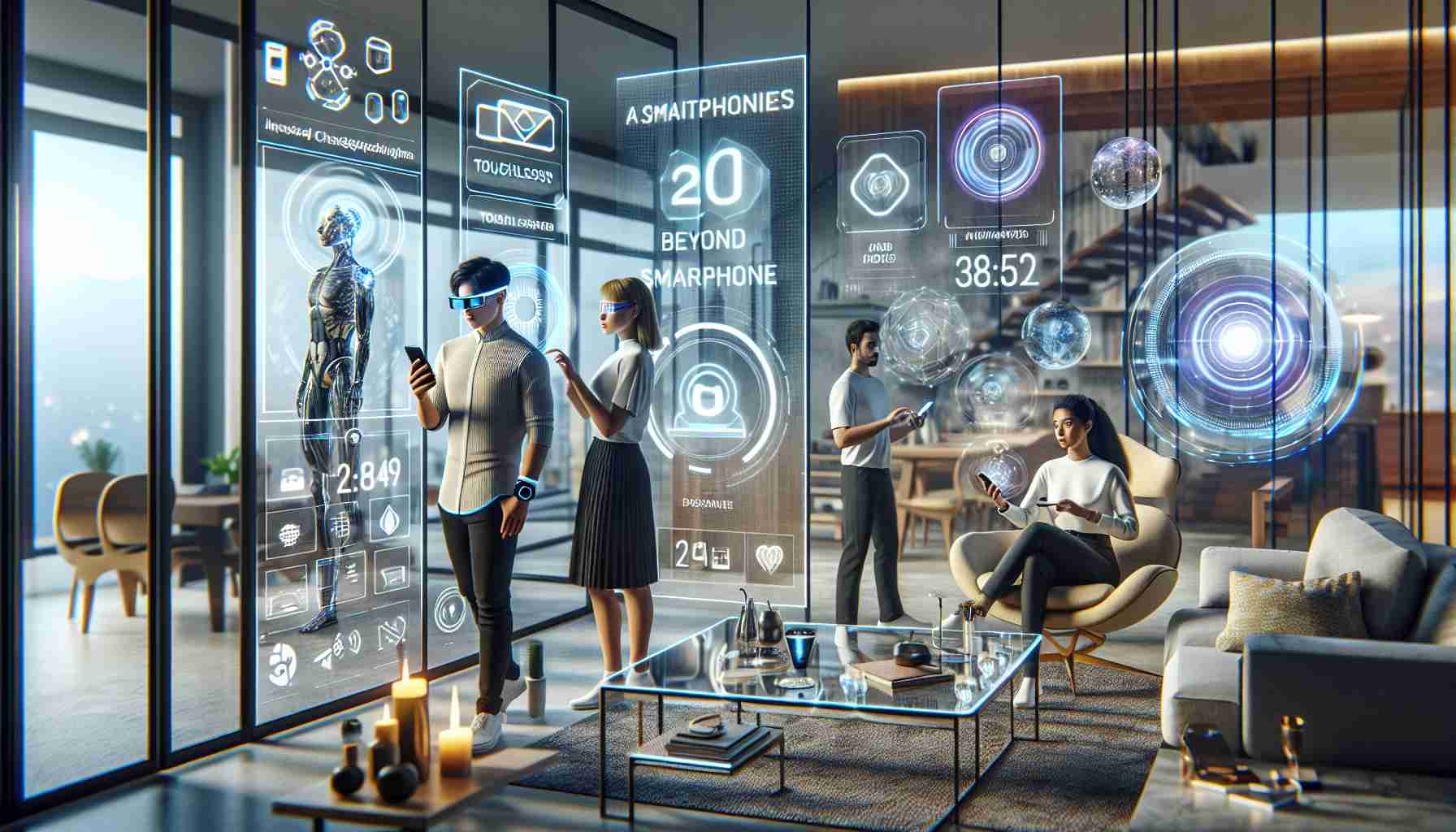As the smartphone continues to serve its role as the primary tool for communication and information retrieval, several innovative technological ventures are on the horizon with the potential to alter or supplant the mobile device’s current prominence.
A myriad of advanced projects dance on the edge of modern tech possibilities, each with the promise to revolutionize our daily interactions. These technologies are not just limited to enhancements of existing gadgets but rather span across uncharted territories, offering a peek into a world where smartphones might no longer hold the torch of necessity they currently do.
Take, for example, augmented reality (AR) and virtual reality (VR) systems; these are redefining immersive experiences and broadening the ways in which we consume digital content. From gaming to professional training, AR and VR show ample potential to become integral components of everyday life, providing a hands-free, contextual experience that smartphones could struggle to emulate.
Additionally, advanced wearables are evolving beyond mere fitness trackers into holistic lifestyle companions. These devices are becoming increasingly sophisticated, capturing vital health data and integrating with AI to give personalized insights and recommendations, possibly reducing our reliance on smartphones for health management and activity planning.
Furthermore, innovative communication infrastructures, such as satellite-powered global internet services, are in development. They seek to democratize internet access, ensuring connectivity in even the most remote areas without the need for a smartphone.
These cutting-edge developments offer a glimpse into a future where the conventions of today could be vastly transformed. As we continue to forge ahead with technological advancements, we might soon find our smartphones occupying a lesser role amidst a suite of more specialized devices tailored to specific aspects of our lives.
The most important questions regarding the future beyond smartphones and emerging technological endeavors include:
– How will AR and VR integrate into everyday experiences and what industries will they significantly impact?
– Can advanced wearables replace smartphones in daily tasks such as communication or navigation?
– What are the implications of satellite-powered global internet services on smartphone usage and internet accessibility?
– How will these technologies maintain privacy and data security for users?
Answers to these questions cover several aspects:
AR and VR systems are already having a substantial impact on industries such as gaming, real estate, healthcare, and education by providing immersive experiences that enhance engagement and learning. They could eventually become standard tools for these and other industries, extending beyond entertainment into practical applications.
Advanced wearables have the potential to take over smartphone functions like notifications, calls, and GPS services by integrating with other connected devices in our environment. Moreover, with advancements in display technologies, some wearables may feature screens capable of running more complex applications.
Satellite-powered global internet services could revolutionize global connectivity by providing high-speed internet access in previously underserved areas, reducing the need for traditional mobile network infrastructure and possibly lessening reliance on smartphones.
Concerns about privacy and data security with new technology are paramount. As devices become more connected and personal information is increasingly shared across platforms, maintaining robust security measures to protect user data is a significant challenge that developers and regulators are facing.
Key challenges and controversies associated with these technologies relate to:
– Privacy concerns, as AR and VR could inadvertently expose user data and behaviors to unauthorized parties.
– Health risks, such as potential eye strain or motion sickness from prolonged use of AR and VR devices, or the impact of wearing devices that emit radio frequencies close to the body for extended periods.
– Accessibility and equality in the face of advanced technology, ensuring that it benefits a broad spectrum of the population and does not widen the digital divide.
– Potential job displacement caused by the automation and efficiencies these new technologies might bring, prompting concerns about societal consequences.
Advantages of emerging technologies:
– Enhanced communication, learning, and work productivity.
– Greater access to health monitoring and fitness tracking, leading to potentially improved health outcomes.
– The democratization of the internet through improved accessibility.
Disadvantages of emerging technologies:
– Increased screen time and dependence on digital experiences that could impact social behaviors.
– Higher complexity and costs associated with developing, maintaining, and securing these advanced systems.
– Risk of creating an even larger technological and socio-economic divide.
For those interested in exploring more about technological advancements and their impact, here are some suggested related links:
– Wired – for news on emerging technology and how it affects culture, education, and the economy.
– MIT Technology Review – for in-depth analysis and insight on technological changes.
– The Verge – for updates on the intersection of technology, science, art, and culture.
The source of the article is from the blog shakirabrasil.info
